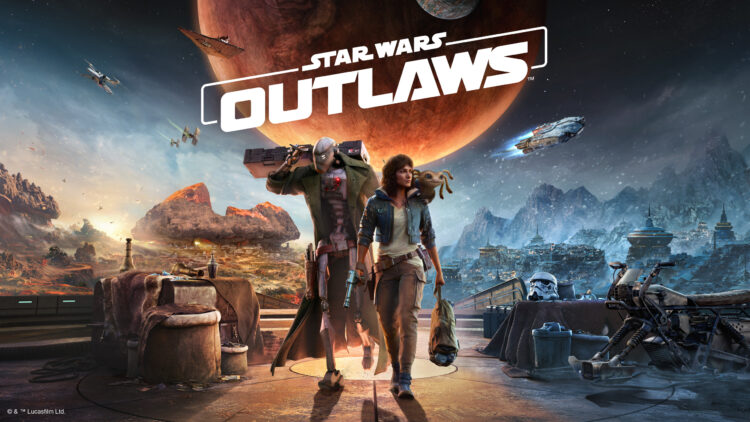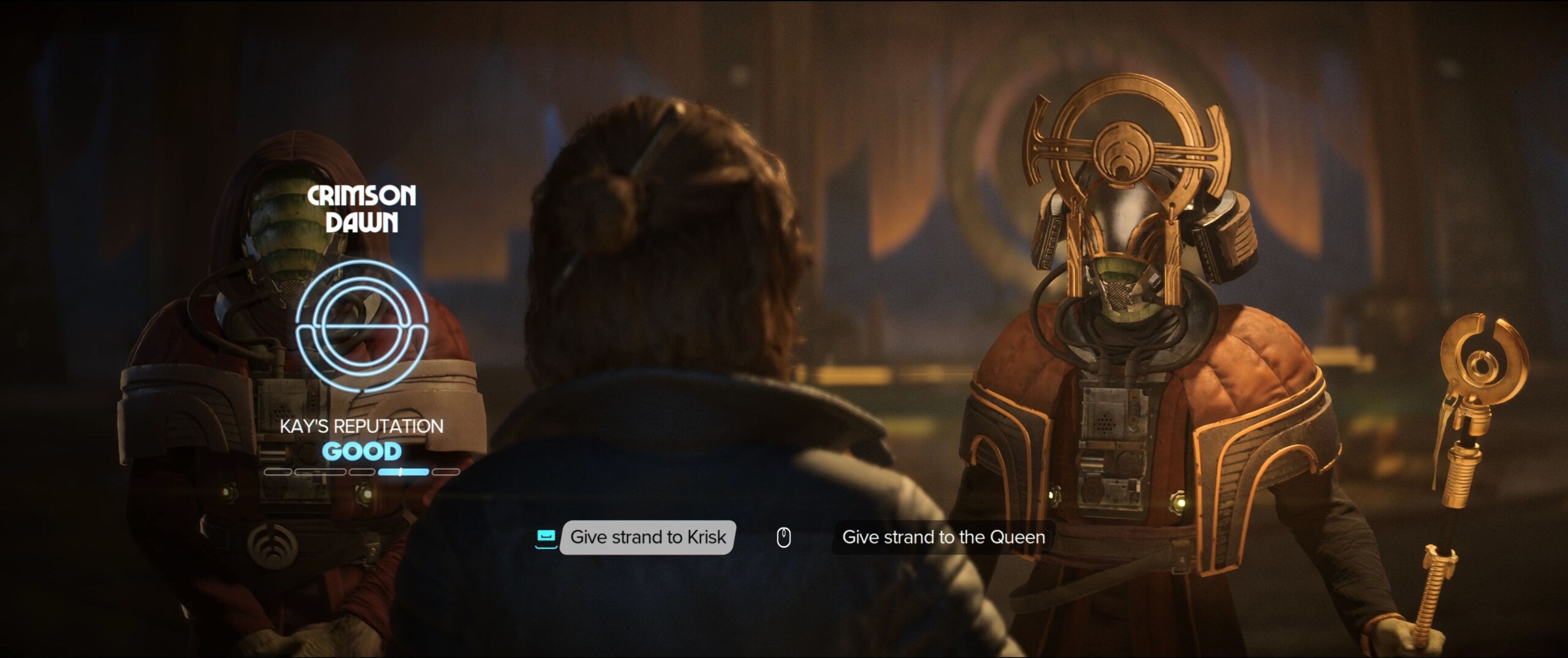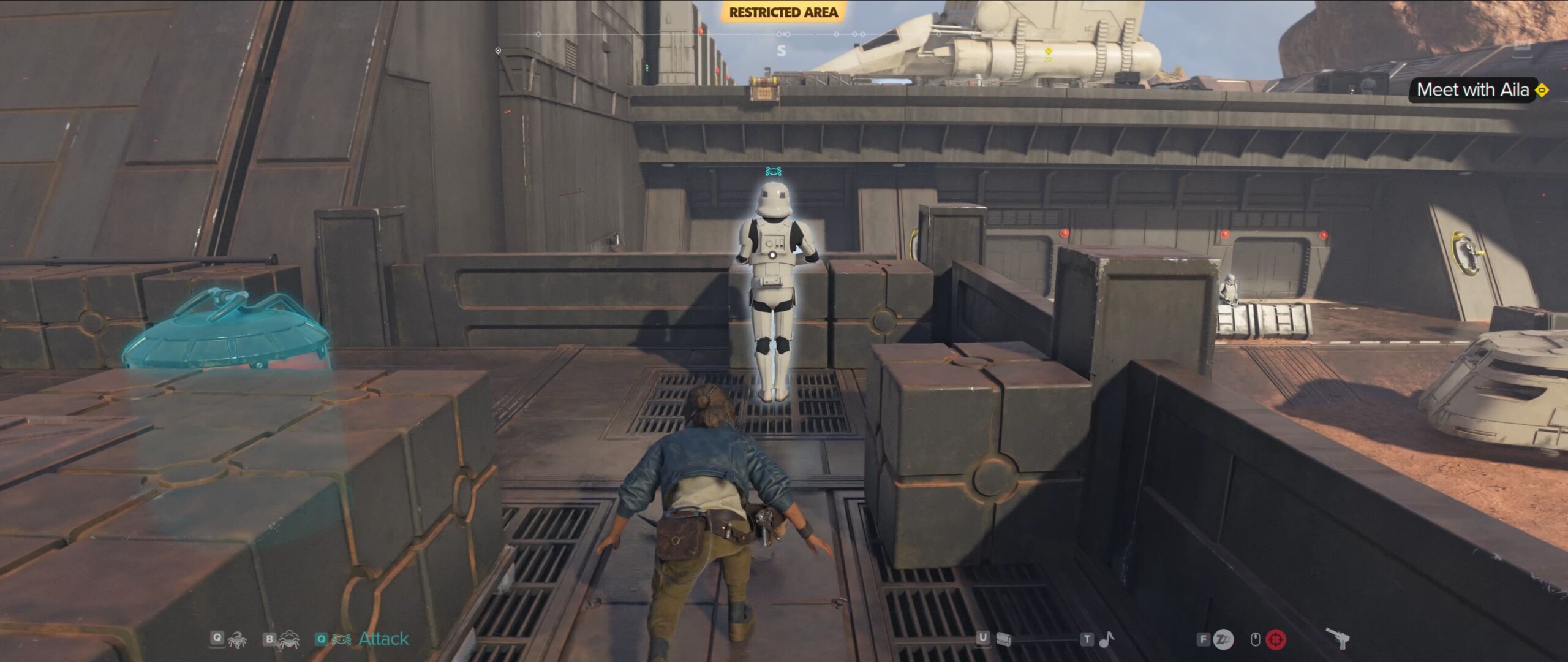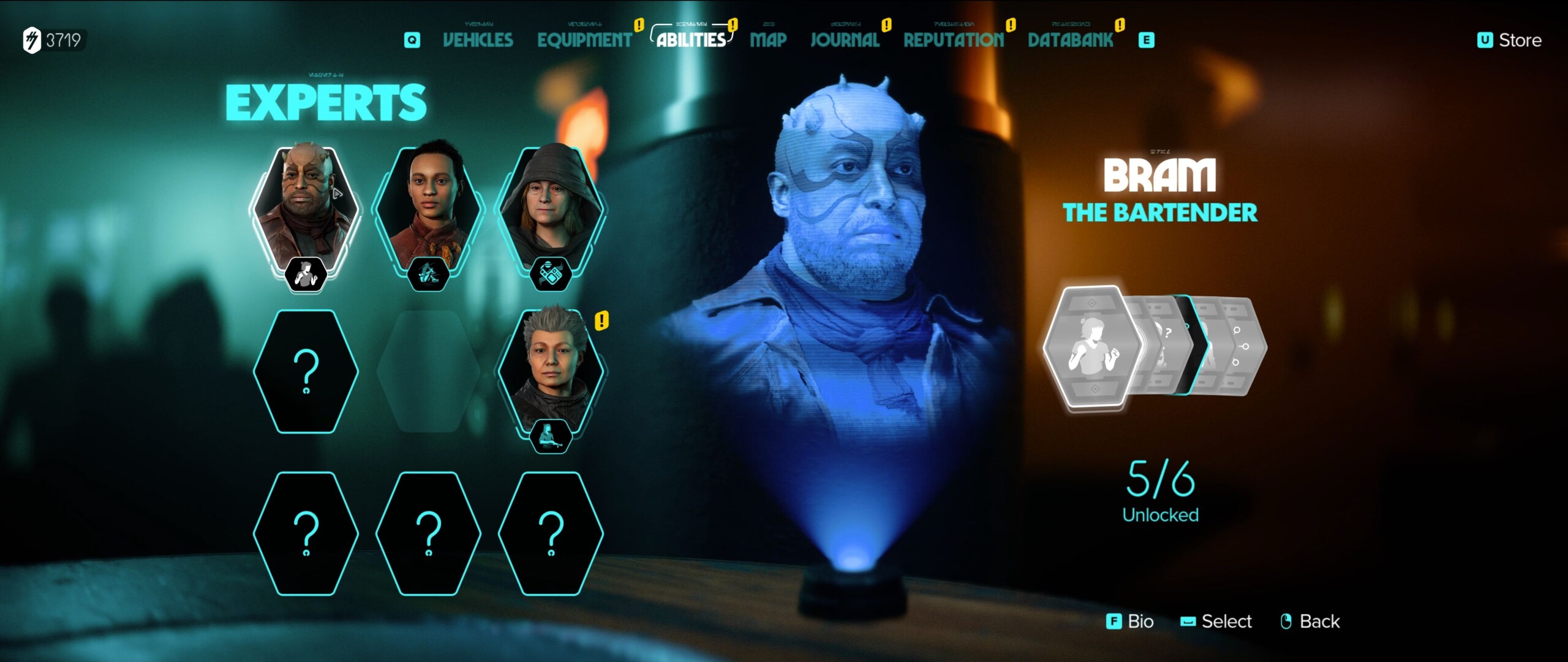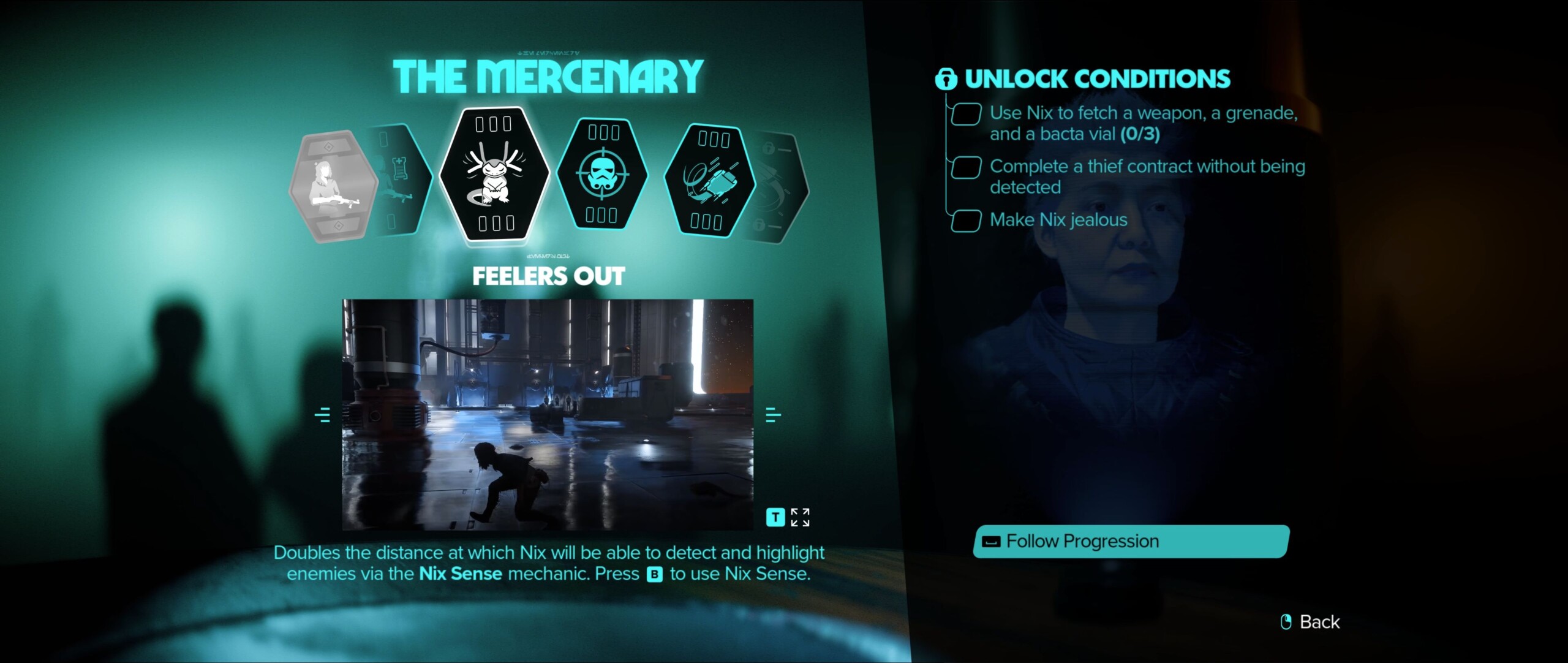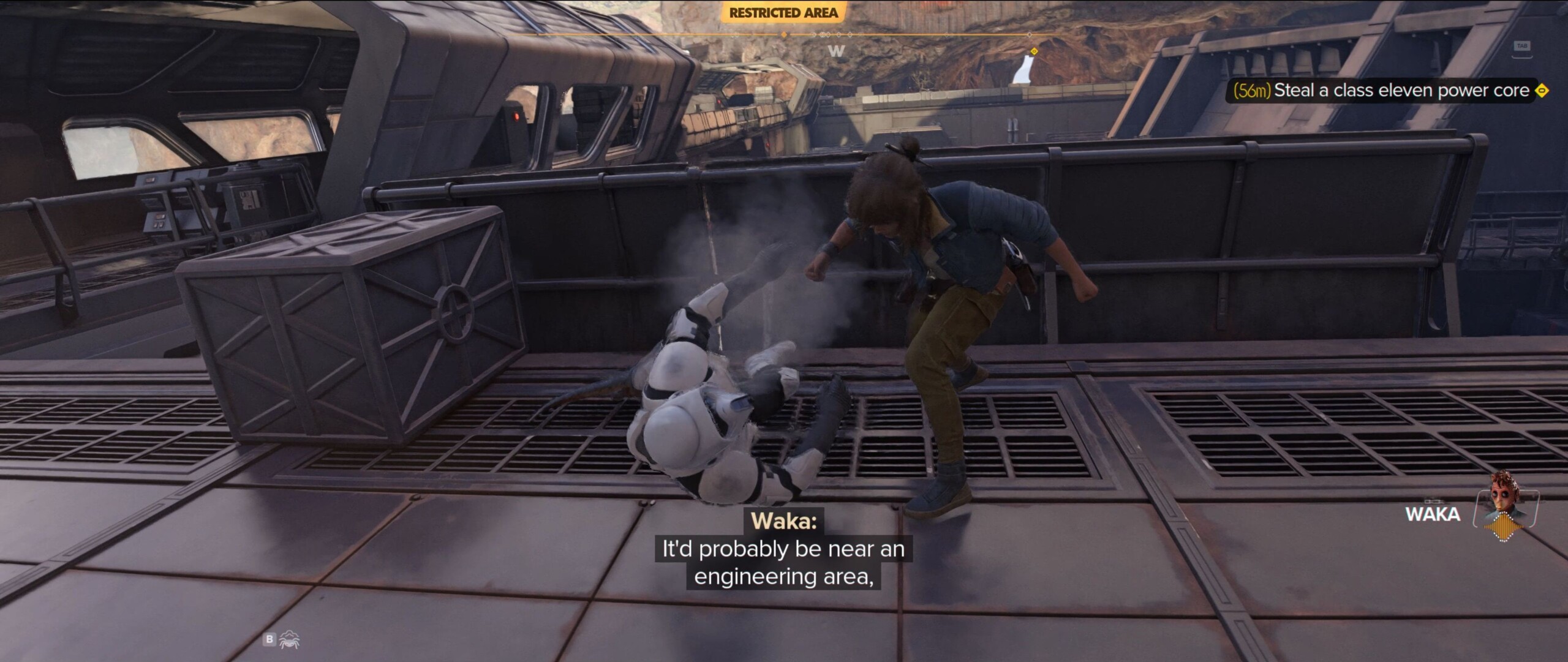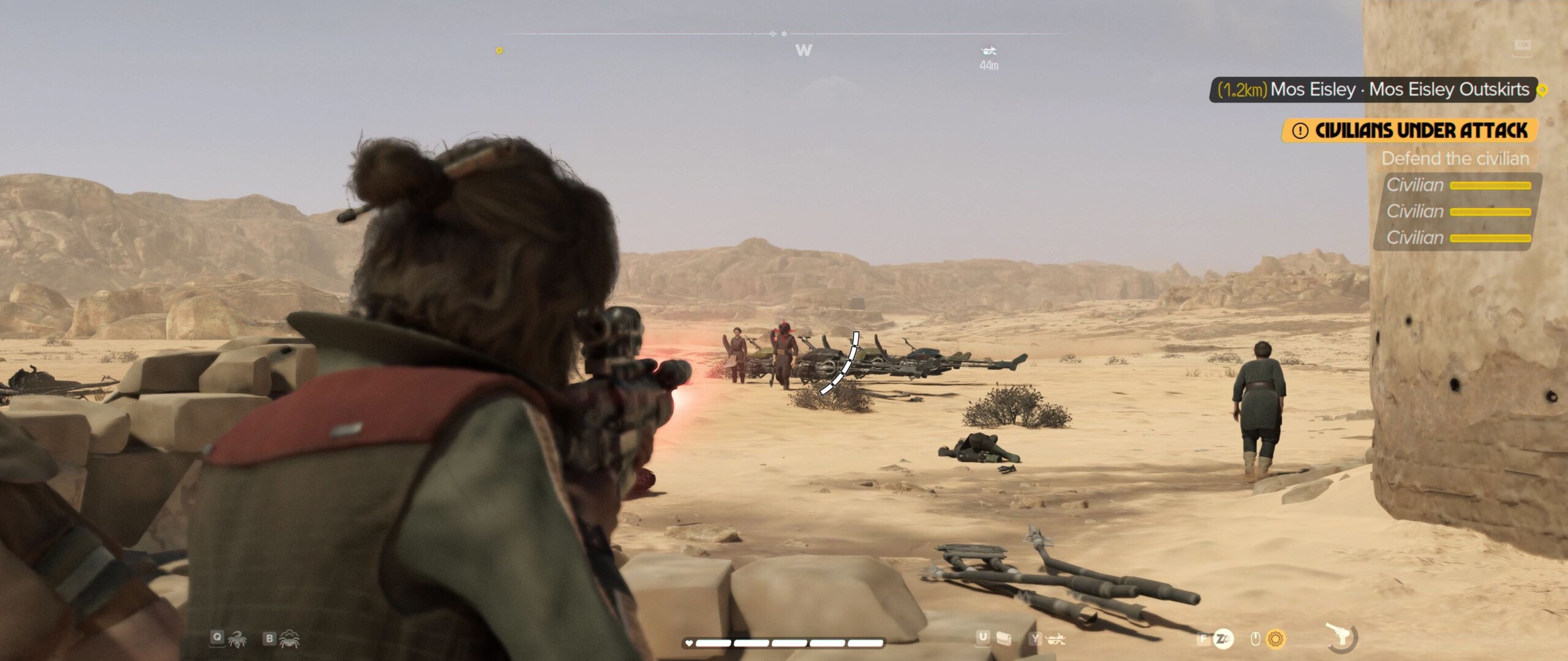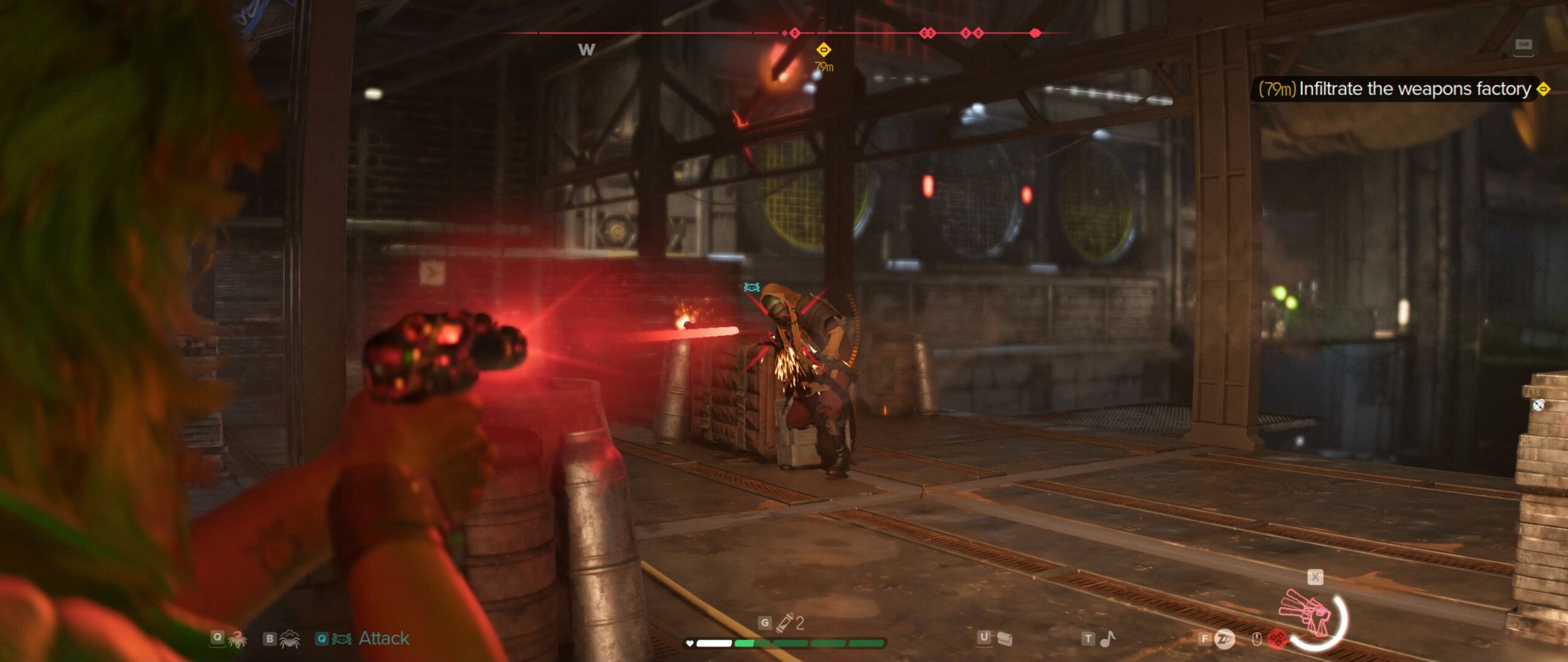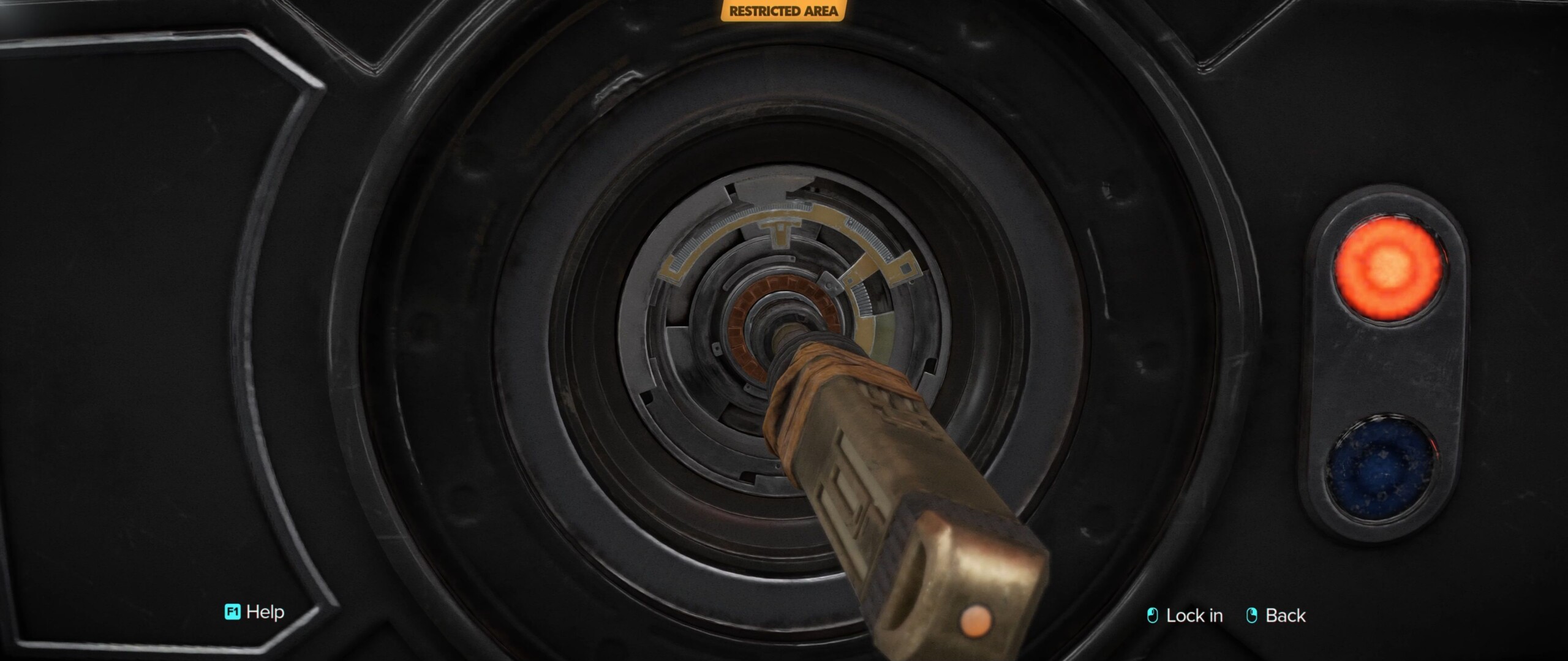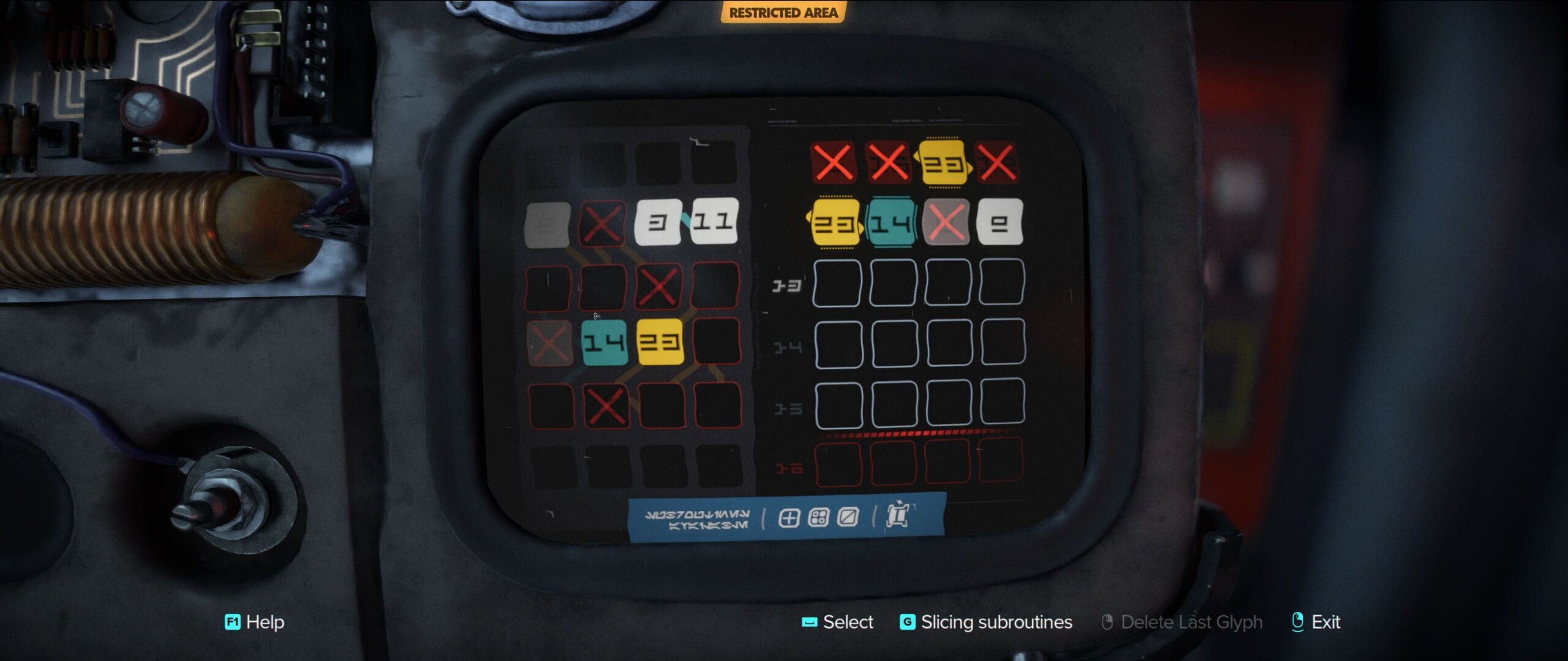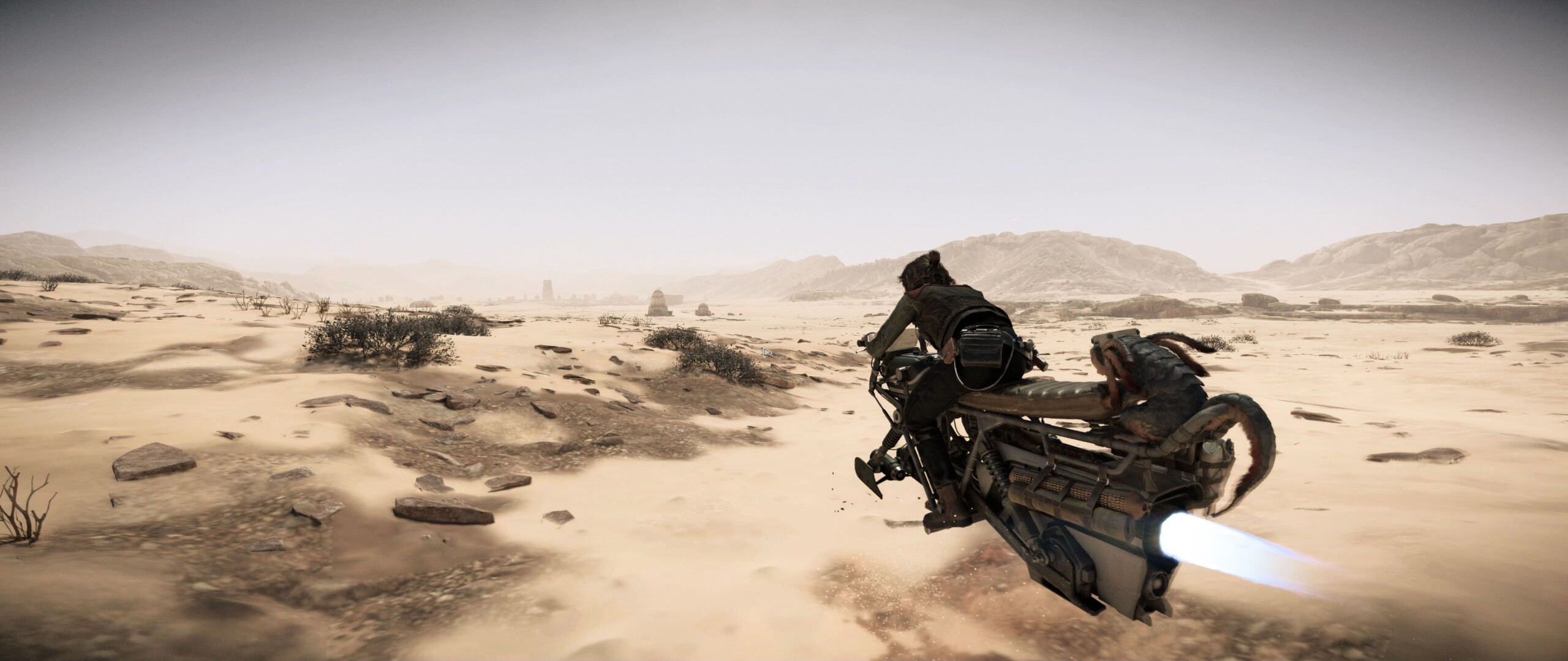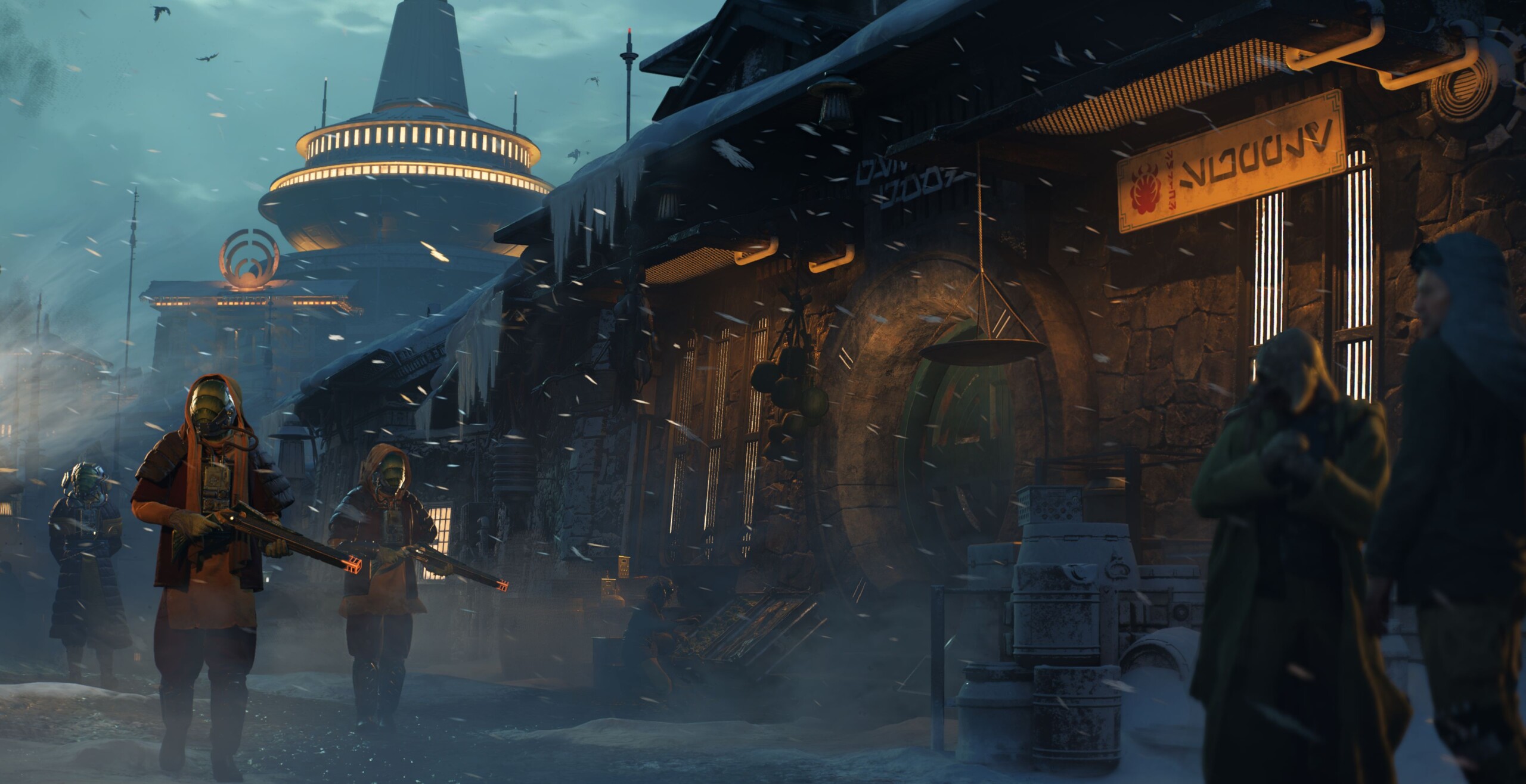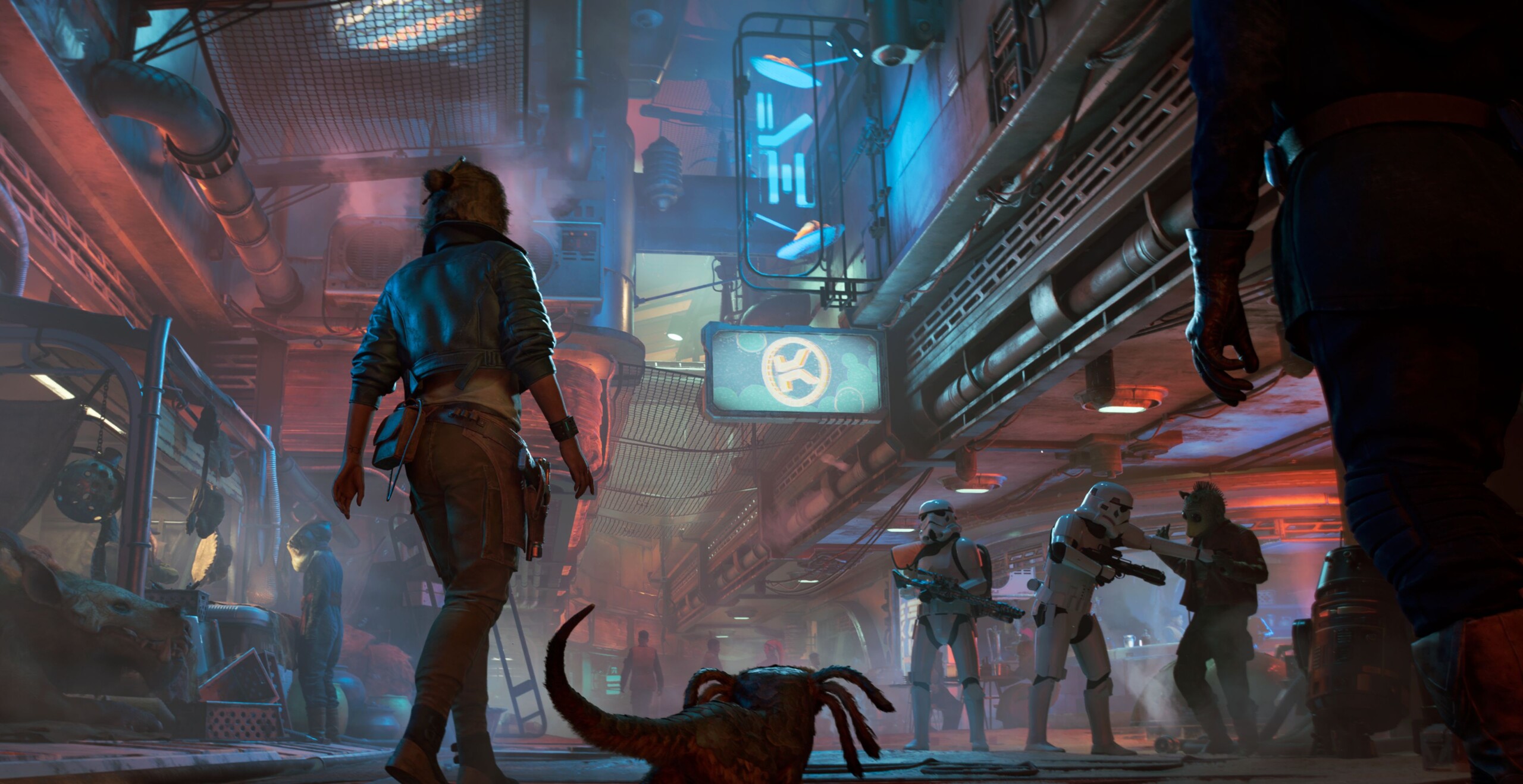Perhaps this is me stating the obvious but Star Wars Outlaws isn’t the typical run-of-the-mill game. In a franchise where the war between Jedis and Siths and the promotion of the Force is prevalent, the game weaves a different tale with a focus not necessarily or entirely original, in the form of an up-and-comer, kind of roughhouse scoundrel with their cutesy pet and partner.
I’ve been trying hard, looking deep inside myself to find the words to describe Star Wars Outlaws best. The game is both Ubisoft and its developer, Massive Entertainment, first foray into an open-world Star Wars universe, making it something of a, forgive the pun, massive undertaking, especially given the gravity of the franchise. Fair warning: the game is a fairly deep rabbit hole of main quests, side quests, and somewhat random encounters that both sucks you in and has you asking the question “But why?”
A Scoundrel’s Perspective
Star Wars Outlaws puts you in the shoes of Kay Vess, a scoundrel and wannabe smuggler who hails from the casino city of Canto Bight, located on the planet of Cantonica. The game effectively starts off in media res, introducing you to her and her cute alien pet and partner in crime, Nix. From the very start, the duo are thick as thieves.
Unlike most Star Wars first-person or third-person titles – the latter of which are few – you’re not put in the shoes of a seasoned Jedi Knight or mercenary like Kyle Katarn. Kay Vess is a scoundrel: living a hard knock life, it’s made clear that she grew up learning many tricks of the trade, the most obvious of them being the ability to steal, especially with Nix in tow. The game and its environments are rich with such targets and opportunities for Kay Vess or rather, Nix to pickpocket and steal items – Kay can’t do it herself, for whatever reason – off high-value targets or subjects that carry story-driven items.
As is the case with all open-world action RPGs, Outlaws provides you the ability to customise Kay Vess and Nix, albeit in a limited fashion. For Kay, there are articles with in-game benefits that you can equip her with, while there are some that are just purely cosmetic. For Nix, you can equip him with passive abilities that are gained by visiting eateries and completing the mini-games that are attached to them. And yes, he has cosmetics that can be equipped with him but gaining them requires that you collect a set list of items and turn them in at special “Nix Merchants”.
Bumbling Through The Syndicates
Perhaps one of the many, many things that stick out to me in Outlaws is Kay Vess’ character or more precisely, her personality. I get that Ubisoft and Massive want to portray her as the scoundrel who is taking her first time out in the world, but the level of amateurism that’s on display feels a little much. If I am brutally honest, it feels forced and it doesn’t help that her mocap and voice actress, Humberly Gonzalez, pours that buffoonery on, thick.
In virtually every conversation, you can just feel how unsure Kay Vess sounds, especially when she tries to act tough in front of different syndicate members. One example is when she tries to demand payment upfront for a Hutt Cartel fixer; the minute they inform them that they only receive payment when the job is complete, she backs down immediately. Have some backbone, for heaven’s sake.
Speaking of Syndicates, Outlaws basically have you interacting with four groups: The Pyke Syndicate, Crimson Dawn, The Ashiga Clan, and the Hutt Cartel. As I previously wrote, the game often puts you in a position where you are forced to choose between different groups, and each syndicate have its own agenda against each other. As these things usually go, currying favour with one group opens up opportunities and access to certain items, while earning the ire of the opposing group results in the opposite and, in most cases, lead to them putting a death mark – one of the jargon for bounty – out on you.
One of the few things Outlaw gets right though is the way it forces you to choose between which group to align yourself with at the time, and often at times, I find myself wondering if I actually made the right choice. Of course, there are other ways you can improve your reputation with each Syndicate group that don’t necessarily damage your goodwill with the other; taking up jobs and turning in specific items usually does the trick.
Sneaky Sneaky, Not Entirely
One of the most frustrating aspects of Outlaws at the moment is the stealth mechanics. I’ve made it clear in my initial impressions about the game that you shouldn’t expect Assassin’s Creed-level of stealth gameplay – Kay Vess is clumsy, slow, and even with Nix helping you perform actions while you stay out of sight, they tend to take their in executing the prompt. But that’s not what frustrates me.
Going all sneaky-sneaky is, in a word, punishing. There is no leeway or margin for error: if you get spotted or caught by enemy NPCs and mobs, that is it. Zip. Finito. You’ve failed. To add insult to injury, if that wasn’t enough, because the game doesn’t autosave as most games do, there is a very real problem of the game reloading several checkpoints that you cleared more than half an hour prior.
And that is to say nothing of the speed when you’re in Thief Mode. This actually segueways into a specific topic, learning skills. Here’s the thing: there are skill trees but there are no skill points to be gained, spent, or allocated. Massive’s approach to character improvement and skill advancement is to earn them through a series of actions and goals.
Want the ability to do a little mini hop with your speeder? You need to perform a long jump of 60 metres on it. Planning on increasing Kay Vess’ total health? You need to find the necessary components to do that. What’s that? You want to stealth run? Then by the Force, you’re going to need to complete some pretty laborious prerequisites. Not only that, these skills are hidden behind several NPCs, all of which are scattered across the four planets that Kay Vess will visit. Oh, and finding them is a bit of a treasure hunt; they’re not entirely in your face.
Learning new skills isn’t difficult as they are time-consuming.
That last example, by the way, is what I strived for early in-game. 10 painstaking hours later, and I got it. And that’s the problem with Outlaws, in my opinion: the opportunities to do these, while present, are spread thin throughout each planet. More often than not, I find myself having to seek out random muggings or smuggling operations in the wild, just so I can inch closer to my goal of being a more efficient thief.
One of the best ways in completing some of the stealth-oriented bonuses and skills are actually side missions that require the subtle approach but, again, the stealth mechanic in this game is punishingly difficult. As I mentioned in my early impressions, this isn’t an Assassin’s Creed game where you speedily crouch-walk up to your unsuspecting victim, and stab them in their neck. Nor is it Ghost Recon, where you can readily attach a silencer to your blaster and snipe them from afar, picking off targets one by one, without raising alarms.
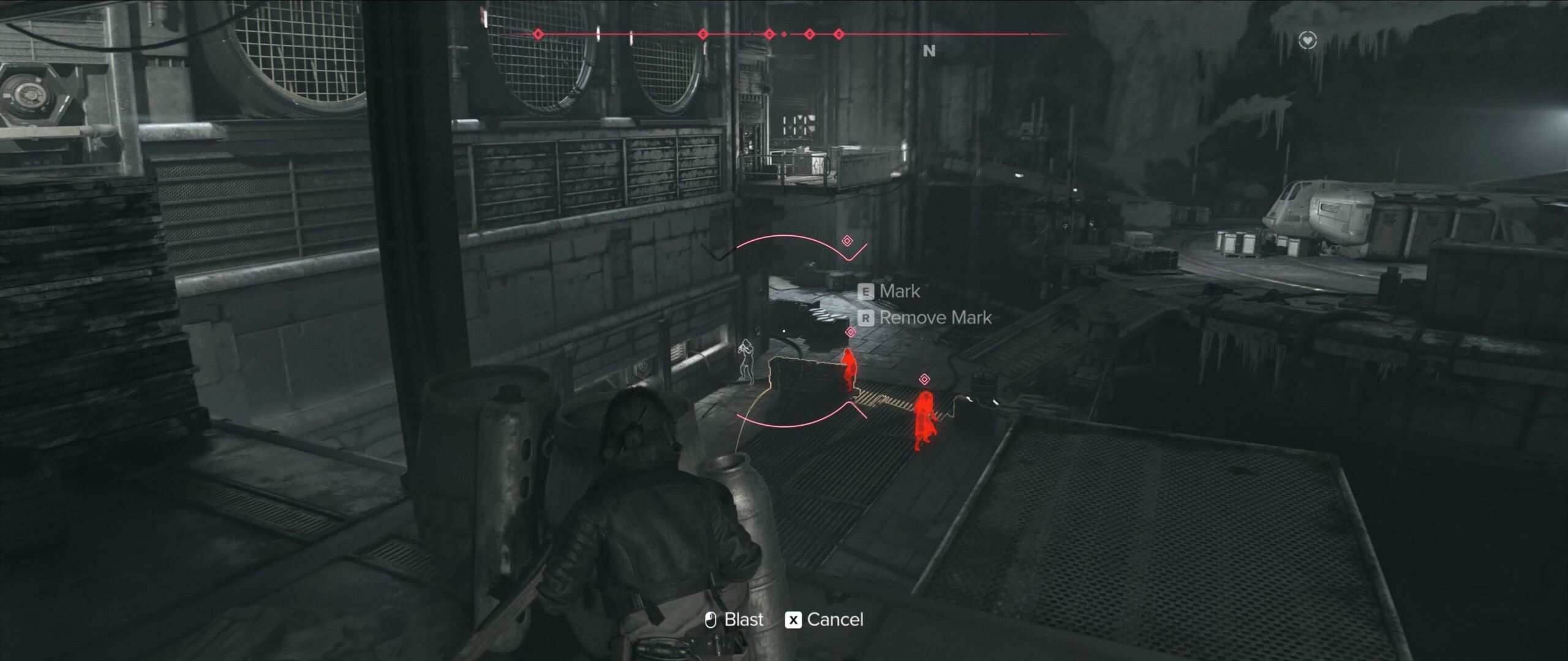 In Outlaws, Kay Vess’ crouch-walk and sneaking up on an enemy is purposefully slow. To be clear, there is a skill progression that allows you to be more stealthy when running or walking, but not your sneaking speed. If you’re used to speedier movement while crouching or accustomed to games that offers some form of improvement to the act, then Kay Vess’ crawl, by comparison, will frustrate you over time.
In Outlaws, Kay Vess’ crouch-walk and sneaking up on an enemy is purposefully slow. To be clear, there is a skill progression that allows you to be more stealthy when running or walking, but not your sneaking speed. If you’re used to speedier movement while crouching or accustomed to games that offers some form of improvement to the act, then Kay Vess’ crawl, by comparison, will frustrate you over time.
Now, if it wasn’t already clear, the game does offer a ranged stun option with the blaster but that has a cooldown timer on it, meaning you can’t just go into an area and start clearing out the crowd, ala Metal Gear Solid or Solid Snake style, if you will. To put it simply, you literally have to work hard to keep yourself out of the spotlight.
Combat Feels Purposely Unpolished
Of course, when push comes to shove and you are forced into a literal firefight with the world – believe me, there are plenty of said scripted scenarios in Outlaws – you can most definitely blast your way out of the situation but it does raise some questions.
The most baffling question that resides in my mind is one that would resonate with fans of the IP – the rather unbelievable accuracy of Imperial Stormtroopers. I swear, out of every three shots that these mobs fire, two of them will actually connect with Kay Vess.
Moving on, Outlaws gives Kay Vess a Hail Mary of sorts when the pressure is dialled up: Adrenaline Rush. It’s a nifty skill that builds up gradually in the heat of combat and when it’s full, activating it allows you to take out multiple combatants in quick succession.
This skill can also be used while riding on your speeder bike but ironically, you can’t ride-and-shoot freely while riding said bike, because Massive said that it “doesn’t want Outlaws players to do that”. No, seriously. You cannot draw your blaster while riding the speeder bike.
Then there’s melee, or something akin to melee. As I said in my first impressions, the close combat system of Outlaws feels purposefully clunky and not as finesse. It makes you appreciate each takedown Kay Vess executes, even if it is just her constantly hammer-fisting the unfortunate souls. Still, better concussed than dead from blaster fire, am I right?
You Get A Side Quest! And You Get A Side Quest!
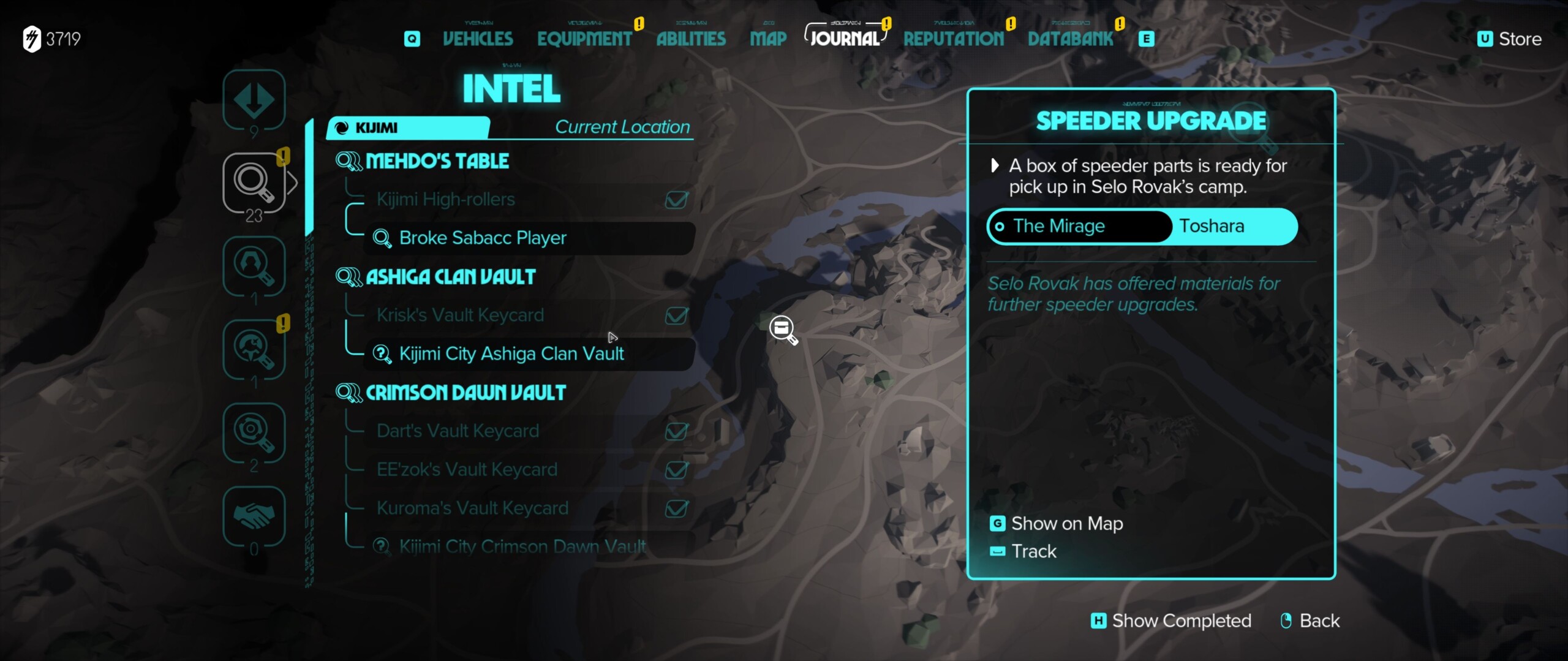
Beyond the janky stealth and rough combat mechanics, the world of Outlaws offers a cornucopia of side quests in the form of requests and information gleaned from random chatter, and mini-games in the form of Sabacc and Fathier Racing. The side quests are the non-essential activities that, as you’d surmised, fills Kay Vess’ bags with key components, parts, and quest items that enable you to modify everything from her blaster to her ship, the Trailblazer, as well as her speeder bike. These “treasures” are scattered all across the maps of each area on every planet and believe me when I say that they are vast.
Getting from one point to another really requires that you use your speeder bike. Of course, it also serves the dual purpose of helping you outrun syndicate member or Imperial troops from chasing you down, although sometimes, with a death mark on your head, some syndicates that you’re in poor standing with will have member that are persistent, in that they will chase you down on their own speeder bikes.

The aforementioned mini-games are credits-oriented and more or less where you go to fill up your coffers and, particularly with Sabaac, where you pick up new skills to cheat. You know, to help you win games because you’re a scoundrel and all that jazz. Fathier racing is the game of probability, and just like horse racing, you’re constantly betting against the odds. That is, unless you’re willing to invest the time in sneaking into different Syndicate territory and finding out who the winning Fathier is, and then placing the maximum bet accordingly. Ironically, it appears Ubisoft seems to have made it so that you can only pull off the same bet three times, likely as a failsafe against cheesing the game. After which, I can’t play the game for a while.
Oh, and I can’t forget to mention the data-spike and slicing mini-games as well. These are both fairly simple-to-understand games, both with their own unique mechanics. Think of data spiking as a form of lockpicking; by using her hairpin cum data spike, Kay Vess can break into loot boxes or locked doors, simply by timing your button or in my case, mouse clicks, to the rhythm of the lock.
Slicing, yet another Star Wars jargon for hacking, is a game of combinations, presented in rows of three, four, or five numbers or symbols, which you need lineup in the correct order. There are subroutines to alleviate the process, such as increasing the number of tries by one additional turn, or automatically letting your slicer line up the combinations in the correct sequence. Again, it’s not as difficult as it looks and you get the hang of it after a few attempts.
Breathtakingly Detailed Worlds
Perhaps the one saving grace of Outlaws is the astounding and staggering detail of each planet and world. Massive has clearly gone through pangs to make their first open-world Star Wars game as intricate as possible and boy, does it show. One of its main bragging point is the recreation of the Mos Eisley spaceport on the planet Tatooine.
Outlaws is perhaps one of the only games that actually allows you to walk and see what is a near faithful recreation of the scoundrel-ridden city in all its glory, and of course, the Mos Eisley cantina too. But that’s not to draw attention away from the brand new planet of Toshara and its planet city Mirogana either. I spent several hours, completing multiple side quests that, again, were spaced out so far apart from one another, using the speeder is an absolute necessity.
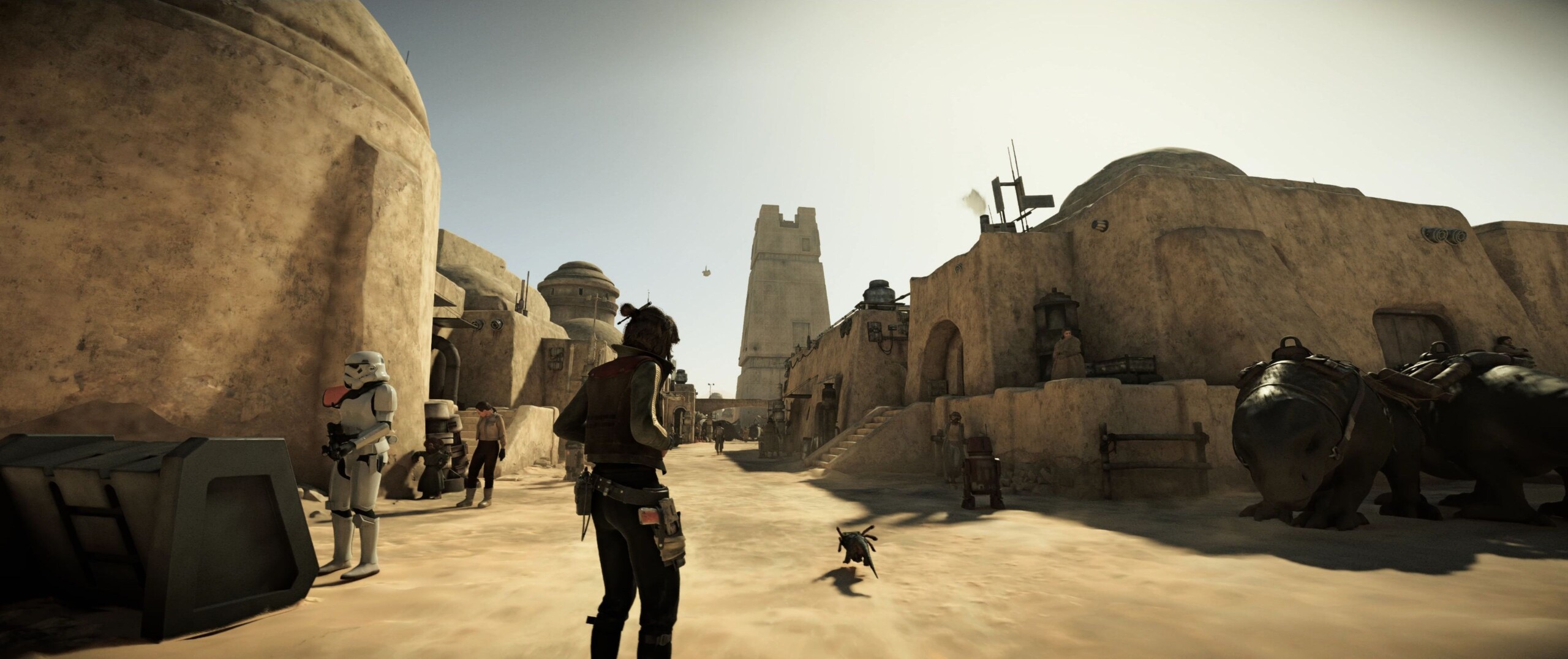
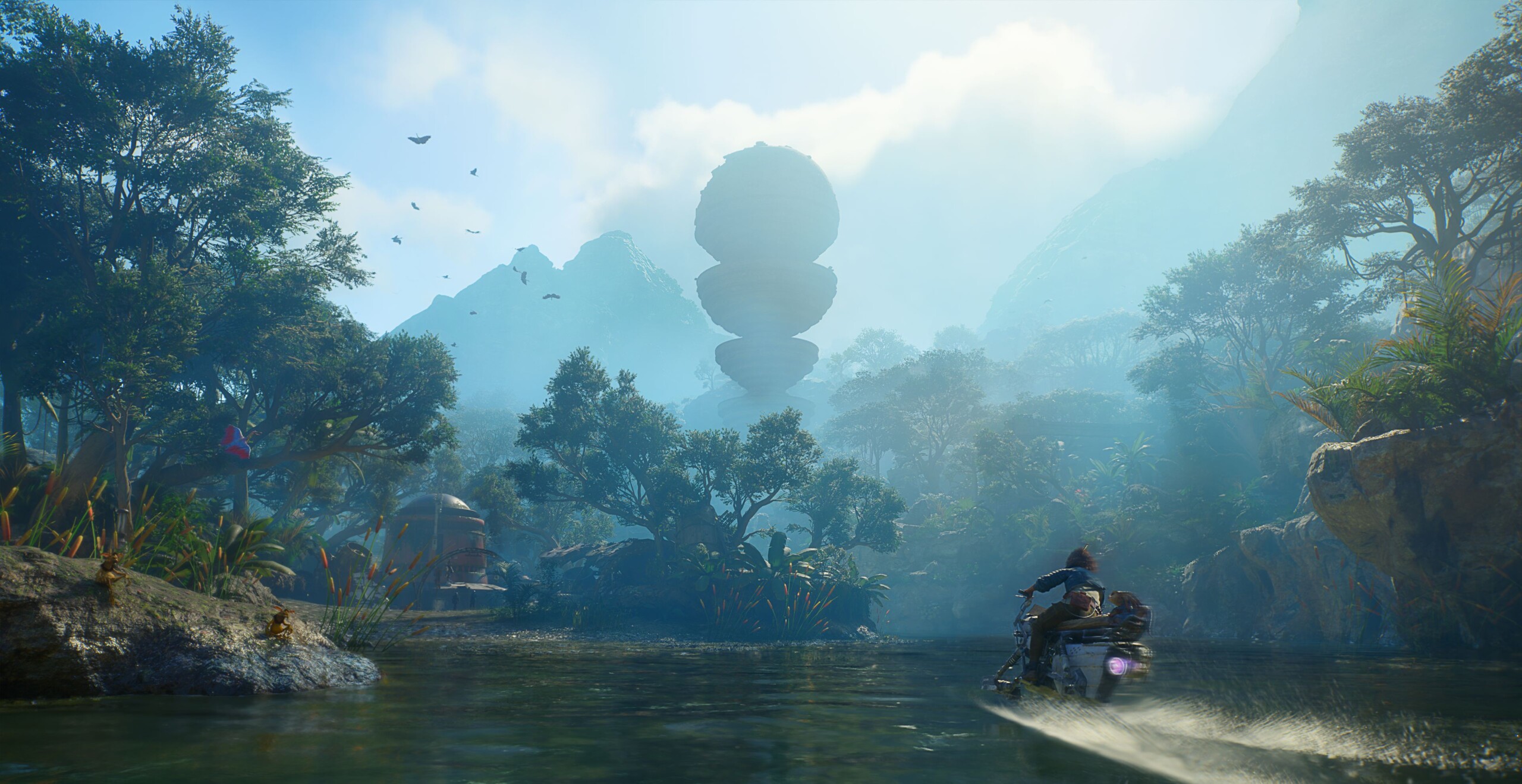 Going off-tangent about the speeder for a bit: riding it is every bit as fun as Massive has made it, but if you’re playing Outlaws on PC with a keyboard and mouse, the controls are more complicated than a controller. If you’re using the “A” and “D” keys, you’ve got more control. However, if you’re using the mouse to veer either way, it’s actually a whole different ball game – swinging it too far either way, and the turning radius of the bike follows suit. Worse, you need to manually bring the cursor to equilibrium by centring it on the screen.
Going off-tangent about the speeder for a bit: riding it is every bit as fun as Massive has made it, but if you’re playing Outlaws on PC with a keyboard and mouse, the controls are more complicated than a controller. If you’re using the “A” and “D” keys, you’ve got more control. However, if you’re using the mouse to veer either way, it’s actually a whole different ball game – swinging it too far either way, and the turning radius of the bike follows suit. Worse, you need to manually bring the cursor to equilibrium by centring it on the screen.
Getting back on point, that’s just a minor niggle in the grand scheme of the game, and again, as with all open-world action RPGs, I would sooner find myself occupied either with the main story campaign or another side mission that I had picked up from an NPC or discovered whilst riding along the huge maps.
At the end of the day, though, the story of Star Wars Outlaws isn’t the most gripping I’ve experienced, but it is nevertheless refreshing to be playing a character that suddenly develops a connection to the Force. If Massive and Ubisoft decide to make a sequel to the game, I only hope that it comes with a wittier, sharper-wit Kay Vess. And of course, just more cuteness overload with Nix.
Follow us on Instagram, Facebook, Twitter or Telegram for more updates and breaking news.


